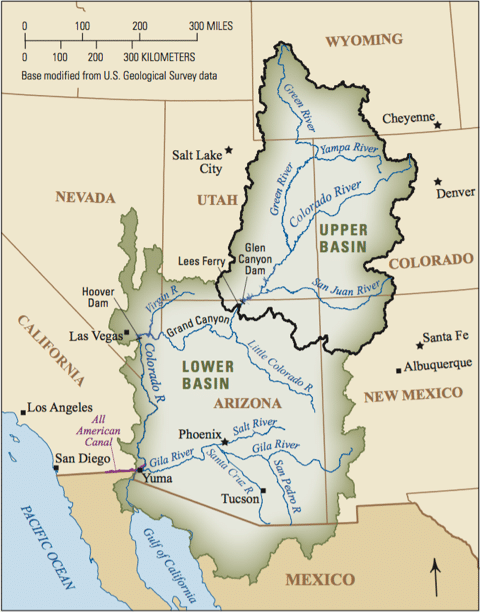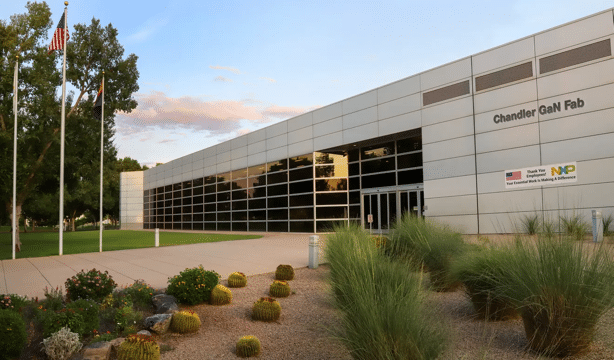On the surface Phoenix is a huge success story. The economy is booming, population is up 40% in two decades, half a million new jobs have been created in just two years, and Arizona leads the USA in new investment.
Phoenix is an epicenter of the computer chip industry with Intel and Taiwan’s TSMC spending $30 billion on new semi-conductor manufacturing.
Growth is so rapid that Phoenix has vaulted past Philadelphia to be the fifth biggest US city behind only New York, Los Angeles, Chicago and Houston. Arizona’s population has soared to seven million. By contrast in 1940—before air-conditioning and water diversion—barely half a million souls lived in this desert expanse previously known only for cactus and the Grand Canyon.
Despite the good news, Phoenix and Arizona face fundamental challenges, most importantly climate change and water.
This past summer Phoenix recorded a record 18 consecutive days where temperatures reached 43 degrees Celsius. Beyond that grim statistic, for 24 days temperatures were above 38 degrees.
Why is Phoenix hotter and drier? One factor is a two-decade long drought in the desert southwest. Another is the relentless pace of development, suburban sprawl encroaching on desert scrub and agricultural land. In Maricopa County that encompasses Phoenix, agricultural land has shrunk by 36% in just a few years. Cotton cultivation, traditionally a huge crop in Arizona, is down 85%. Dairy farming is similarly shrinking as farmers sell out, yielding to developers and home builders. With temperatures projected to remain high, Pro Publica predicts that by 2050 the Phoenix area could be the least habitable place in the United States.
Huge problem
Water is a huge problem. The Colorado River provides water for much of the west and seven states led by California control its flow. Through a network of canals the Colorado River accounts for 36% of Arizona’s water. The state is a leader in water conservation and some statistics suggest that water usage has fallen to 1950s levels despite population being seven times greater. Agriculture remains the biggest user of Colorado River water.

Colorado River and tributaries
More ground water and heavy rains in 2023 have ameliorated what threatened to be a water crisis two years ago. Nonetheless in Lakes Powell and Mead, the country’s largest reservoirs, water levels are only 35% of capacity. Looking ahead, Arizona is preparing to finance a $5 billion desalination plant in Mexico to bring water 300 kilometers north.
Concerning jobs, 22 000 Arizonans work in the chip sector. But analysts say 3 000 additional engineers will be needed for the new Intel fab and 1 600 more for TSMC.
Will these skilled workers be found? Newspaper publisher Donovan Kramer Jr. in Casa Grande, south of Phoenix, is optimistic. Some will be recruited abroad and others will come from California where high taxation and burdensome regulation have accentuated an outflow of people. Los Angeles and San Diego are only six-hour drives from Phoenix.

NXP chip fab, Chandler, AZ
Housing affordability is another issue. The medium home price in the Phoenix area is over $500 000. That figure is up over 20% in one year and mortgage interest rates have doubled in 18 months. The average salary in the Phoenix tech sector is over $70 000 per year but much lower in services. For many prospective buyers housing is becoming unaffordable. Will this change? It’s hard to say, but Phoenix has a long history of housing booms and busts.
Economic boom
A visitor to central Arizona can’t help but notice the economic boom. Construction cranes dot the urban landscape, universities are building and expanding, the light rail network of Phoenix is reaching into western suburbs.
But there are red flags. Nine years ago the Arizona Department of Water Resources concluded that ‘the status quo will not hold’. There will be, said its report, three million more people in Arizona by 2035.
The conclusion is clear, Phoenix and Arizona must change and conserve if the future is to be as prosperous as today.
The views of the writer are not necessarily the views of the Daily Friend or the IRR
If you like what you have just read, support the Daily Friend

